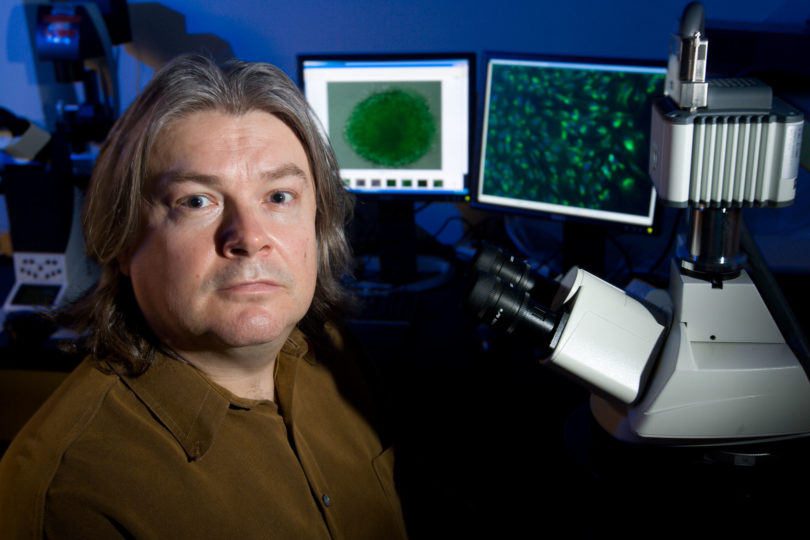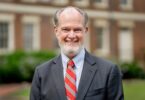Despite the promise associated with the therapeutic use of human stem cells, a complete understanding of the mechanisms that control the fundamental question of whether a stem cell becomes a specific cell type within the body or remains a stem cell has—until now—eluded scientists.
A UGA study published in the March 2 edition of the journal Cell Stem Cell, however, creates the first ever blueprint of how stem cells are wired to respond to the external signaling molecules to which they are constantly exposed. The finding, which reconciles years of conflicting results from labs across the world, gives scientists the ability to precisely control the development, or differentiation, of stem cells into specific cell types.
“We can use the information from this study as an instruction book to control the behavior of stem cells,” said lead author Stephen Dalton, Georgia Research Alliance Eminent Scholar of Molecular Biology and professor of cellular biology in the Franklin College of Arts and Sciences. “We’ll be able to allow them to differentiate into therapeutic cell types much more efficiently and in a far more controlled manner.”
The previous paradigm held that individual signaling molecules acted alone to set off a linear chain of events that control the fate of cells. Dalton’s study, on the other hand, reveals that a complex interplay of several molecules controls the “switch” that determines whether a stem cell stays in its undifferentiated state or goes on to become a specific cell type, such as a heart, brain or pancreatic cell.
“This work addresses one of the biggest challenges in stem cell research—figuring out how to direct a stem cell toward becoming a specific cell type,” said Marion Zatz, who oversees stem cell biology grants at the National Institutes of Health’s National Institute of General Medical Sciences, which partially supported the work.
“In this paper, Dr. Dalton puts together several pieces of the puzzle and offers a model for understanding how multiple signaling pathways coordinate to steer a stem cell toward differentiating into a particular type of cell. This framework ultimately should not only advance a fundamental understanding of embryonic development, but facilitate the use of stem cells in regenerative medicine,” said Zatz.
The study looked at a common signaling molecule known as Wnt. Dalton’s team found that in small amounts, Wnt signaling keeps the stem cell in its pluripotent state. In larger quantities, it does the opposite and encourages the cell to differentiate. But Wnt doesn’t work alone. Other molecules, such as insulin-like growth factor (Igf), fibroblast growth factor (Fgf2) and Activin A also play a role. To complicate things further, these signaling molecules amplify each other so that a two-fold increase in one can result in a 10-fold increase in another. The timing with which the signals are introduced matters, too.
Dalton and his team spent a pain-staking five years creating hypotheses about the how the signaling molecules function, testing those hypotheses, and—when faced with an unexpected result—rebuilding their hypotheses and re-testing.
Their finding gives scientists a more complete understanding of the first step that stem cells take as they differentiate, and Dalton is confident that the same approach can be used to understand the subsequent developmental steps of embryo dividing into more specific cell types.








